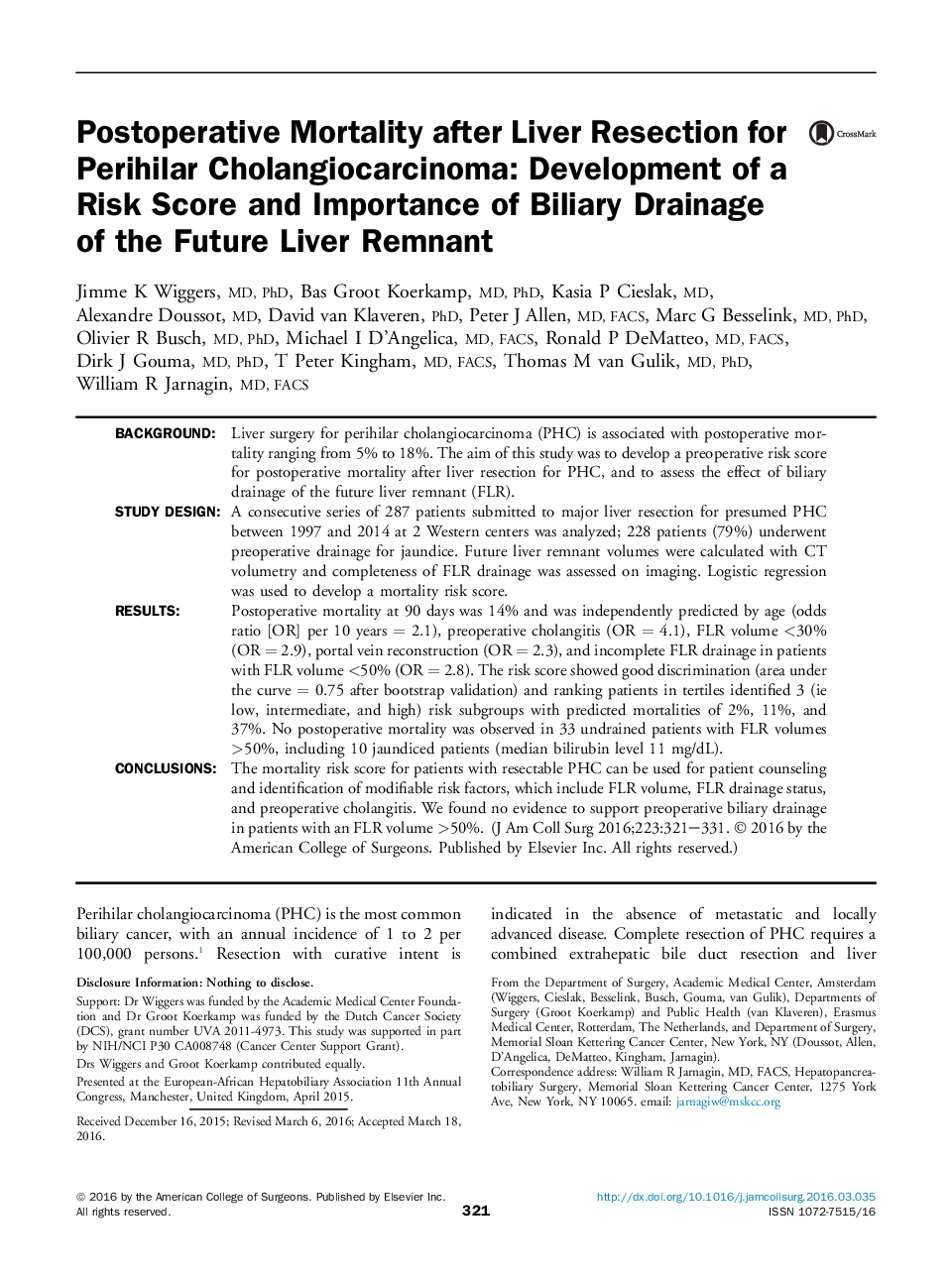| Article ID | Journal | Published Year | Pages | File Type |
|---|---|---|---|---|
| 6252427 | Journal of the American College of Surgeons | 2016 | 12 Pages |
BackgroundLiver surgery for perihilar cholangiocarcinoma (PHC) is associated with postoperative mortality ranging from 5% to 18%. The aim of this study was to develop a preoperative risk score for postoperative mortality after liver resection for PHC, and to assess the effect of biliary drainage of the future liver remnant (FLR).Study DesignA consecutive series of 287 patients submitted to major liver resection for presumed PHC between 1997 and 2014 at 2 Western centers was analyzed; 228 patients (79%) underwent preoperative drainage for jaundice. Future liver remnant volumes were calculated with CT volumetry and completeness of FLR drainage was assessed on imaging. Logistic regression was used to develop a mortality risk score.ResultsPostoperative mortality at 90 days was 14% and was independently predicted by age (odds ratio [OR] per 10 years = 2.1), preoperative cholangitis (OR = 4.1), FLR volume <30% (OR = 2.9), portal vein reconstruction (OR = 2.3), and incomplete FLR drainage in patients with FLR volume <50% (OR = 2.8). The risk score showed good discrimination (area under the curve = 0.75 after bootstrap validation) and ranking patients in tertiles identified 3 (ie low, intermediate, and high) risk subgroups with predicted mortalities of 2%, 11%, and 37%. No postoperative mortality was observed in 33 undrained patients with FLR volumes >50%, including 10 jaundiced patients (median bilirubin level 11 mg/dL).ConclusionsThe mortality risk score for patients with resectable PHC can be used for patient counseling and identification of modifiable risk factors, which include FLR volume, FLR drainage status, and preoperative cholangitis. We found no evidence to support preoperative biliary drainage in patients with an FLR volume >50%.
